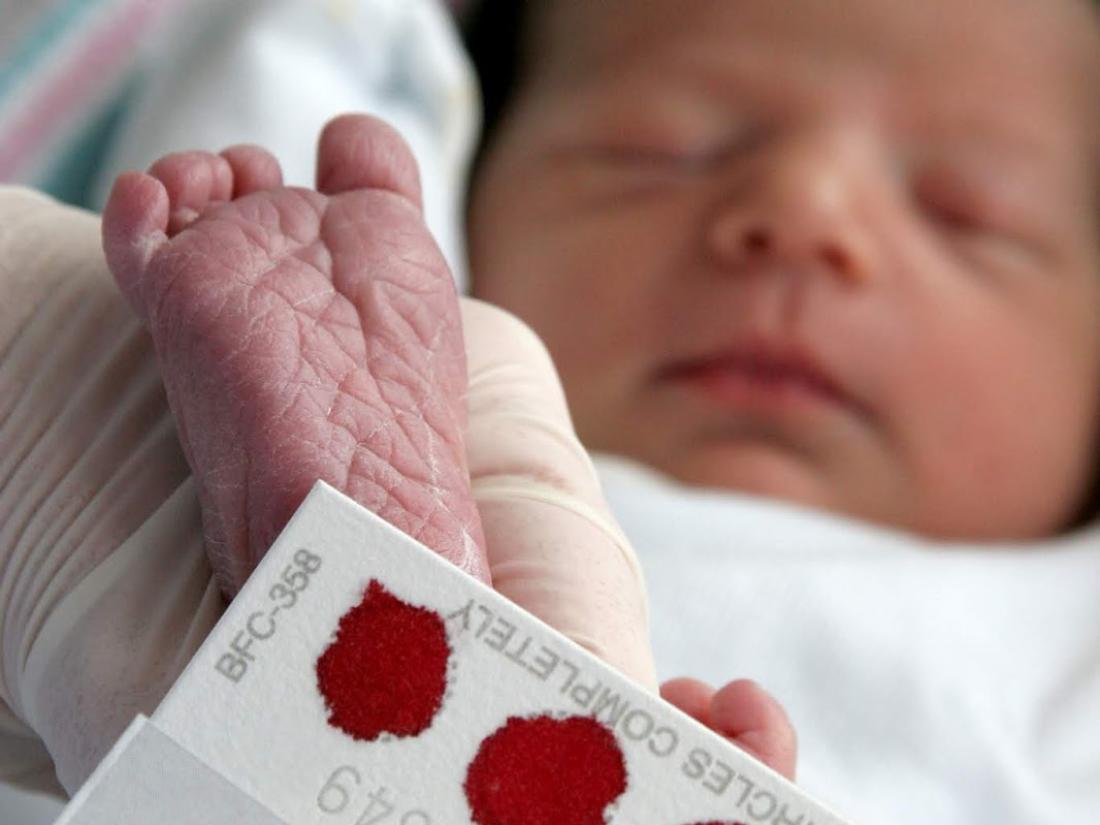Ending the maternal-infant health crisis

Prematurity is the leading cause of neonatal death in this country
Our five March of Dimes Prematurity Research Centers are March of Dimes funded centers established over the last decade to conduct translational research into the causes of preterm birth.
Harnessing the power, resources and brightest scientific minds of some of the most esteemed research universities in the world, our PRCs are working independently and together to conduct groundbreaking research that will lead to the development of diagnostic and therapeutic tools to predict and prevent preterm birth.
While each PRC focuses on specific research themes with key demographics of women, the centers are collaborative, nimble and adaptive, representing a first of its kind research network in the scientific community that enables discovery on a grand scale.
Each Center also contributes to the network as a whole by submitting studies to the March Of Dimes Database for Preterm Birth Research. The MOD Database for Preterm Birth Research was conceived and developed by Marina Sirota, PhD and Atul Butte, MD, PhD from the Institute for Computational Health Sciences at UCSF as part of the March of Dimes Prematurity Research Center at Stanford, and is currently led by Dr. Sirota and managed by Tomiko Oskotsky, MD. The MOD Database for Preterm Birth Research aims to organize scientific data and research across all MOD-funded Prematurity Research Centers with the goal of enhancing research collaboration and coordination to accelerate the overall pace of discovery in this field.
We have genes for everything. Those genes, and their combinations and locations, determine everything that we are, from the color our eyes to perhaps even the emotions that color our thoughts. They’re the recipes our mothers used to build us. They tell us where—and who—we came from, along with all the potential traits and talents expressed by the people who will come from us. Is it possible then that there are genes that regulated the length of a pregnancy? This PRC theme explores the factors we may be born with that may lead to premature birth.
One of the most promising areas of inquiry in our search for the causes of and preventions for premature birth is the interaction between the mom and her microbiome, which is the community of microorganisms in her body. We know that inflammation as a result of infection is responsible for at least 50 percent of all cases of premature birth. And typically, that infection triggers a complex series of actions and reactions.
These include the activation of cells of the immune system, such as neutrophils, which can precipitate the physical transformations of collagen breakdown, cervical shortening, fetal membrane stretching, contractions and ultimately, premature labor and birth.
From the moment a woman gets pregnant, every system in a woman’s body begins undergoing profound changes, but perhaps none more so than her immune system. What’s fascinating is that the immune system, which is normally finely attuned to the presence of any foreign body however small, changes to achieve a delicate balance between tolerating the growing fetus—complete with its father’s antigens, which would normally be rejected—while still protecting the mother from infection.
During pregnancy, the immune system adapts right along with the growth of the fetus. The process is so precise that researchers believe that by tracking those changes and their interaction with the other systems (also being studied), we can gain an important new understanding not only of the gestational length of normal pregnancies, but also the potential signaling pathways that are triggered in the event of premature birth.
The placenta plays a central role in nurturing a fetus through pregnancy, which is why researchers have long suspected its dysfunction could be a leading cause of preterm birth. In fact, placental dysfunction has been directly linked to other poor pregnancy outcomes such as miscarriage, stillbirth and preeclampsia.
One foundational belief of March of Dimes is that environment, racial and social inequities must be addressed to give all babies a healthy start. But just when does that “start” begin? And how do these differences affect mom versus her baby? Environmental factors, stress, economics, and structural racism are some of the many determining factors of disparity and health equity.
By example, does the lifelong chronic and/or acute perinatal stress experienced by mothers in at-risk populations trigger epigenetic changes and alterations of gene expression in their babies?
African American women living in low- income, urban environments have chronic and acute stress, both of which have been found to negatively affect perinatal outcomes, such as preterm birth, and infant health. Acute stressors, including random community violence, and chronic stressors, including financial insecurity, housing, discrimination and being the sole provider for a family, are all factors
Identifying risk for preterm birth and getting the right care in the right place is key to saving lives. This PRC theme supports the development and exploration of biomarkers that indicate premature birth.
There are many components the blood of the mother and baby (for example, ribonucleic acid (RNA), deoxyribonucleic acid (DNA)). While DNA is like a blueprint of biological guidelines that a living organism must follow to exist and remain functional, RNA is what carry out this blueprint’s guidelines. It’s been known for decades that blood contains miniscule amounts of free-floating DNA and RNA released by dying or damaged cells throughout the body. Often this cell death represents natural cellular turnover; sometimes it’s the result of disease processes. But, until recently, analyzing this genetic material has been difficult due to its scarcity. Research in this area has led to promising diagnostics for early detection of preterm birth, preeclampsia, and other risks to the health of Moms and Babies.
A number of maternal medical conditions are associated with an increased risk of indicated or spontaneous preterm birth, including, for example, hypertensive disorders (preeclampsia/eclampsia, pre-existing, gestational, etc), cardiovascular disease, diabetes (both pre-existing and gestational), and increasingly recognized and reported mental health disorders and substance abuse.
This PRC theme aims to uncover the links between major systemic and localized comorbidities and preterm birth so that we can begin to mitigate and prevent preterm birth and maternal and infant mortality.
The major success of the PRCs comes through the active collaboration and networking across centers. Sharing data & discoveries, while making connections across several themes requires integrating the work of researchers and clinicians from a broad range of disparate disciplines. More than 200 scientists, engineers, statisticians, sociologists and medical professionals work together to foster innovation that will accelerate discoveries of the unknown causes of preterm birth and new ways to prevent it. The March of Dimes Data Repository for Preterm Birth Research is truly the backbone of the research effort.
The Data Repository was designed to be both a catalog and catalyst. It provides the capability to ask new and important questions about preterm birth. Dedicated to enhancing research collaboration and coordination, the Data Repository currently contains information from 13 studies, with individual molecular profiles on 365 patients, aggregated genetic data from more than 30,000 patients, and molecular measurements on more than 8,000 samples. More data is being added every day, and the Data Repository’s contents were recently opened to all the other researchers studying preterm birth around the world, in an effort to encourage them to add their own findings to the Data Repository.
Making an Impact with Research
March of Dimes research is focused on making an impact NOW to end preventable preterm birth; we do this by approaching research in several key ways. At both the bench and bedside– through descriptive research that aims to characterize and understand the factors that lead to preterm birth and other adverse outcomes; and through work that leads to mitigation and prevention of preterm birth- through therapeutics, diagnostics, and/or policy changes.
We know that pregnancy is complex. March of Dimes research approach takes a whole-system view and brings the best talent and minds to bear, so we can make a difference in our lifetime.
Recent examples
- How are we making a difference: March of Dimes research programs have made discoveries that lead to direct impact on the health of moms, babies, and their families.
- PRC microbiome studies leading to bedside testing; rapid, low cost predictive testing.
- Early detection of preeclampsia and other adverse pregnancy outcomes through several approaches, including cell-free RNA, data analytics, and other diagnostic markers.
- Understanding maternal-infant nutrition, to wit, NEC and how breastfeeding can improve outcomes
Your Support Helps us Fund Research
There are a number of ways to support research at March of Dimes. Your time – through volunteering at events, raising awareness in your community, and recruiting new and impactful researcher to our network; your attention – by focused attention on how research can impact your community, your country, and the global family; and your resources – by way of funding, access to your network, and getting involved in research directly.
We need your help to continue developing diagnostics, therapeutics, and understanding of the complex factors that lead to preterm birth, maternal and infant morbidity and mortality, and overall adverse outcomes in pregnancy. Moms, Babies, and their Families can’t wait for you to step up and get involved.
Join our amazing volunteer community and make a difference in maternal and infant health across the country.
Advocate for healthy moms and strong babies with March of Dimes. Join our network and make a difference in maternal and infant health.
March of Dimes donations go towards lifesaving research and advocating policies that prioritize the health of moms and babies. Your donation to our nonprofit can help improve the lives of moms and babies everywhere. Donate to March of Dimes today.


